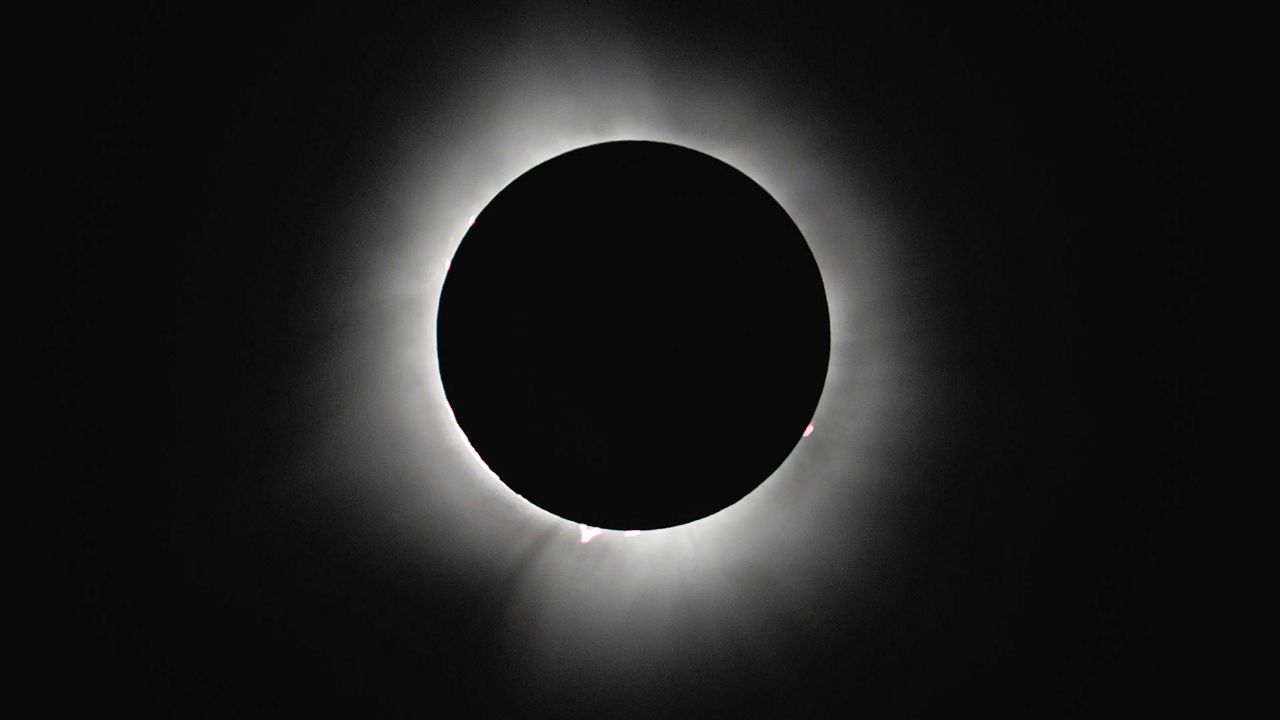OHIO — Ohioans could agree the state has been through the wringer when it comes to weather this year.
2024 was an active year for weather events, from a record number of tornadoes, heat waves and more that impacted communities throughout the state.
While there was some chaos, there were also some rare, astronomical events that made residents stare up into the sky in amazement.
Here's what happened this year:
It shouldn't be a surprise that this is at the top of the list, as parts of Ohio were in the path of totality on the possibly once-in-a-lifetime solar eclipse on April 8.
At the peak of it, the eclipse darkened the skies for more than 4 minutes — birds stopped chirping, the world went silent and people donned their safety glasses to look up to the sky.
While Cleveland was smack dab in the middle of the path of totality, many other Ohio cities got about a minute or more to see the spectacle. An estimated 44 million people lived in the totality path of this year's solar eclipse.
Full solar eclipses occur every year or two or three, often in the middle of nowhere or over the oceans. North America won't experience totality again until 2033, with Alaska getting sole dibs. Then the next one comes in 2044, with totality hitting Canada, Montana and North Dakota.
The next eclipse to span coast to coast won't be in 2045, when it'll stretch from California to Florida.
It was another rare phenomenon that graced the state this year. From northeast Ohio all the way down from southern Ohio, residents got to watch the dancing lights as they spanned down North America.
But it wasn't just once this year the Northern Lights spread into the Buckeye State — it was mainly twice. The first major geomagnetic storm happened on May 10, where the brightest colors dazzled across the skies.
The second geomagnetic storm happened on Oct. 10.
Now, let's move on to the not-so-fun events that happened this year.
Ohio can get tornadoes — albeit not as many as some other states, but this year, that changed.
The state broke the 1992 record of the most tornadoes in a year in 2024.
This year, there were a whopping 73 tornadoes — 25 EF-0s, 33 EF-1s, 11 EF-2s, 1 EF-3 and three that had an unknown rating, according to the National Weather Service.
These tornadoes left paths of destruction in a handful of communities in Ohio. The areas with the most notable damage were areas in central and northern Ohio.
On March 14, there was a tornado outbreak that killed three people and injured dozens of others. The National Weather Service reported 16 tornadoes touched down that day, with Indian Lake in Logan County being the hardest hit.
On May 7, there was another tornado outbreak with 19 tornadoes touching down in several areas of Ohio.
Then on Aug. 6, cities along Lake Erie's shoreline got a blast of storms that produced six tornadoes in the northeast Ohio region. At the height of the storm, there were more than 400,000 power outages. Many residents didn't have their power restored for more than a week as crews had to work to replace many power poles and clean up downed lines throughout the greater Cleveland area.
This summer was a hot one, and the temperatures affected the state for months.
While there were plenty of hot days this year, Ohio had a heat wave in June, which means there were more than five days of 90-degree weather or higher. Emergency rooms saw an uptick in heat-related illnesses, and residents looked to beat the heat at cooling centers, pools, beaches and splash pads. Even Ohio's zoo animals found ways to stay cool.
Extreme heat also hit in July, and near the end of August, a heat wave swept through that brought record-breaking temperatures to some cities cities, the warmest temperatures felt since 2012.
With little precipitation this year, the Buckeye State suffered — especially when it came to crops.
Many parts of Ohio faced some of the worst drought conditions in years. Poor drought conditions began to build in July, then in August, parts of southwest Ohio found itself in the "extreme drought" range, according to the U.S. Drought Monitor. Then, in September, the situation became worse with many areas entering the "exceptional drought" stage.
In September, the U.S. Department of Agriculture declared multiple Ohio counties as natural disaster areas because of the drought. The Ohio State Fire Marshal also instituted a burn ban as the state was at high risk for fires.
The drought affected boaters, pumpkin farms, tree businesses, fall colors and even the growth of a native fruit.
Even as of Dec. 5, parts of Ohio are still in a severe or moderate drought.




